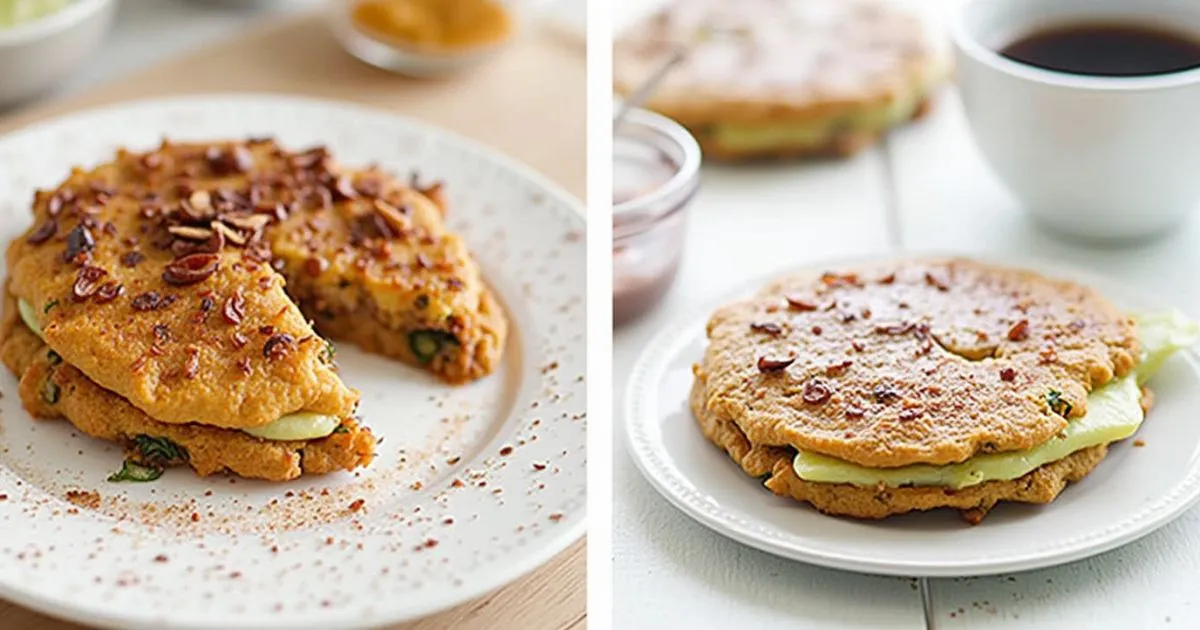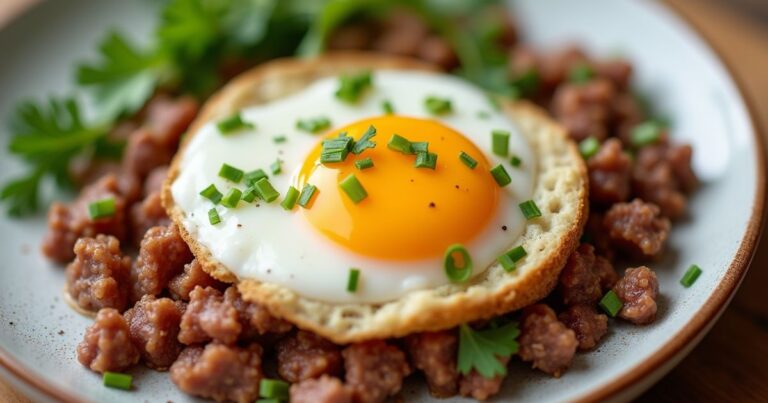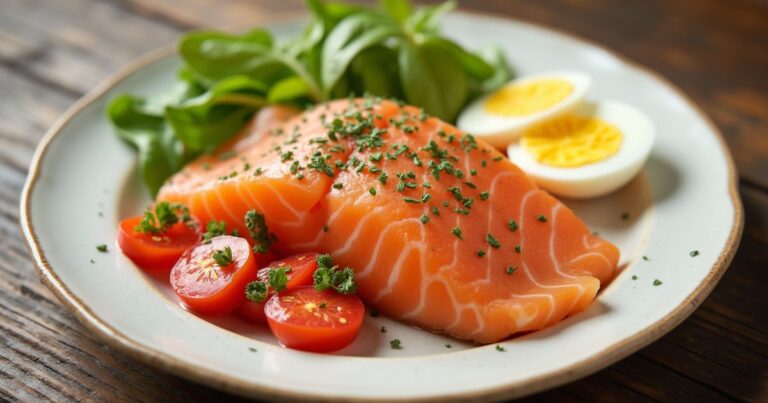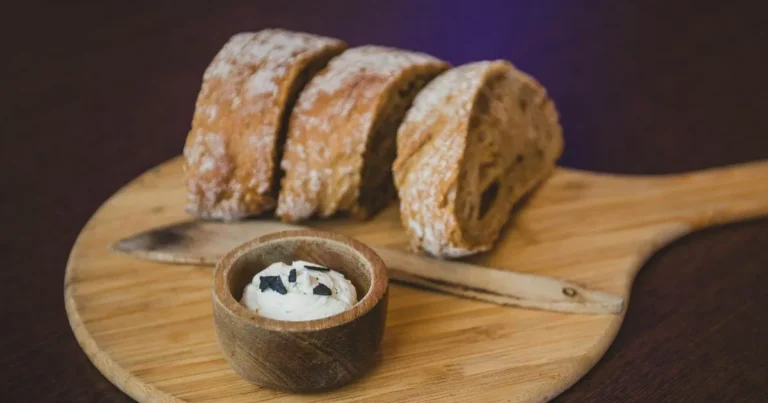15 Easy Gluten-Free Breakfast Ideas for a Healthy and Energetic Morning
Let’s face it—trying to whip up a decent breakfast when you’re half-awake and running late is tough enough. Throw a gluten intolerance into the mix, and suddenly the idea of a simple gluten-free breakfast feels like an absolute nightmare. I’ve been there: it’s 6:45 am, I’m staring blankly into the fridge, silently debating whether plain yogurt (again) counts as a real meal. If you’re nodding along, you’re not alone. So many of us are out here just trying to find a gluten-free breakfast that won’t wreck our stomachs or our mornings.
Table of Contents
Introduction: The Morning Struggle Is Real
Picture this: It’s 6:30 AM. Your alarm just scared you half to death, ripping you from a dream where donuts didn’t make your insides revolt. You drag yourself to the kitchen with that all-too-familiar worry—what the heck can you eat that’s gluten-free, actually tastes like food, AND won’t make you late for work?
For the 3 million Americans dealing with celiac disease and countless others who’ve discovered their body just plain hates gluten, this daily breakfast puzzle isn’t about being picky—it’s about not feeling like garbage all day. Let’s be honest, nobody’s got time for stomach pain, brain fog, and emergency bathroom trips because breakfast went wrong.
The good news? The days of choking down those first-generation gluten-free products (you know, the ones that tasted like sweetened cardboard) are behind us. These days, the options are legit delicious. No more sad, depressing breakfasts—I’m talking colorful plates that might make you want to get out of bed in the morning.
Whether you just got diagnosed last month or you’ve been dodging gluten for years but are stuck in a sad eggs-every-single-day rut, I’m about to transform your morning game with options that’ll make breakfast exciting again. For real.
Why Gluten-Free Breakfasts Matter
Look, I’m not trying to sound like your doctor here, but starting your day with actual nutrition isn’t just good advice—it’s backed by science. And when you’ve got celiac or gluten sensitivity, breakfast becomes even more crucial for setting up your day right.
When gluten gets kicked to the curb, finding good replacement nutrients becomes a big deal. Think about it—toast, cereal, pastries, pancakes—traditional breakfast foods are basically gluten delivery systems that also happen to contain important B vitamins, fiber, and energy-giving carbs. Without thoughtful swaps, your breakfast might as well be nutritional tumbleweed.
Research consistently shows that breakfast eaters tend to:
- Keep blood sugar levels from going haywire all day
- Experience fewer intense “I would literally murder someone for a cookie right now” moments
- Actually remember where they put their keys and phone
- Eat less overall throughout the day
For the gluten-intolerant crowd, these benefits multiply when your breakfast isn’t secretly plotting to ruin your day with inflammation or digestive drama. The right morning meal lets your body actually use nutrients instead of fighting a war against them.
The Science Behind Starting Your Day Gluten-Free
Alright, quick science lesson (I promise it’s relevant): Gluten is a protein found in wheat, barley, and rye that affects everyone differently. For celiac folks—about 1% of people—even tiny crumbs trigger an immune system meltdown where the body essentially attacks its intestines. This damage wrecks nutrient absorption, so you could be eating plenty, but your body’s getting squat.
Then there’s the much larger crowd with non-celiac gluten sensitivity. No intestinal damage, but plenty of inflammation causing brain fog (you know, that “did I just read the same paragraph five times?” feeling), fatigue that coffee can’t touch, achy joints, and digestive chaos. Not exactly the energetic morning vibe anyone’s aiming for.
A study from 2020 found that 78% of people with non-celiac gluten sensitivity reported their brains worked noticeably better when they stayed strictly gluten-free. That mental clarity starts with your breakfast choices.
Yes, avoiding gluten takes more effort than grabbing a bagel, but breakfast gives you a perfect opportunity to establish some solid alternatives that actually support your body instead of sabotaging it. The following ideas combine convenience with nutrition so you’re not choosing between feeling good and having time to brush your teeth in the morning.
Quick and Easy Gluten-Free Breakfast Ideas
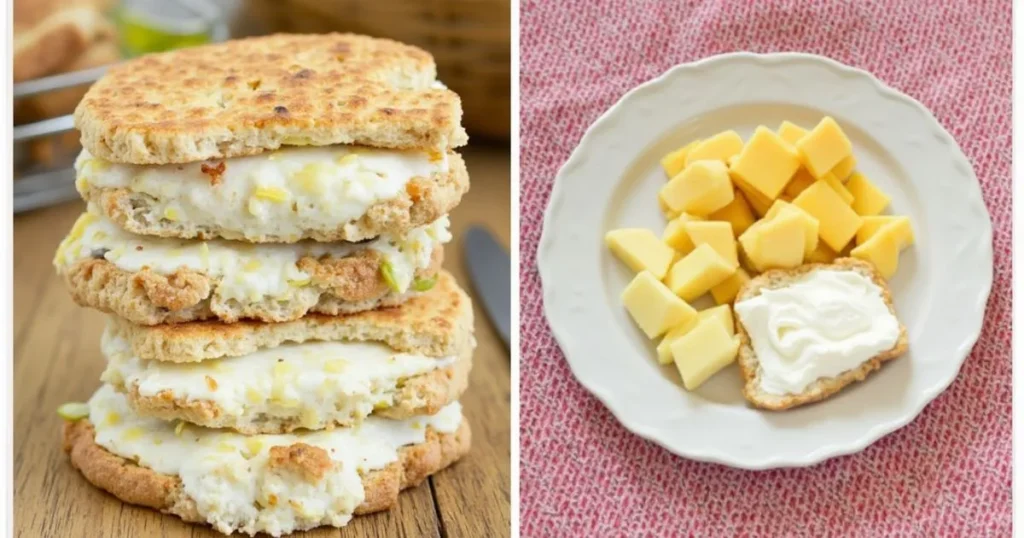
1. 5-Minute Gluten-Free Smoothie Bowls
When your morning’s so rushed you’re considering toothpaste as a breakfast option, smoothie bowls have your back. Unlike regular smoothies that leave you hungry again in 20 minutes, the thicker consistency of bowls satisfies and gives you the psychological win of eating with a spoon instead of drinking your breakfast like it’s a punishment.
All you need is a decent blender and these basic components:
| Base Ingredients | Gluten-Free Toppings | Protein Boosters |
|---|---|---|
| Frozen berries | Sliced almonds | Greek yogurt |
| Banana | Chia seeds | Protein powder (certified GF) |
| Coconut milk | Hemp hearts | Nut butter |
| Spinach | Coconut flakes | Silken tofu |
For those mornings when you hit snooze too many times, try this Berry Green Powerhouse Bowl that takes literally minutes to throw together:
Blend until smooth:
- 1 cup frozen mixed berries
- 1 small frozen banana
- 1 handful baby spinach (I swear on my life you cannot taste it)
- ¼ cup Greek yogurt
- ¼ cup coconut milk (or whatever milk you’ve got)
Then top with:
- 1 tablespoon sliced almonds
- 1 teaspoon chia seeds
- A sprinkle of hemp hearts
- A few fresh berries if you’re feeling fancy
This single bowl delivers about 15g of protein, 8g of fiber, and enough antioxidants to make your cells do a little happy dance—all without a speck of gluten. Pro tip: portion smoothie ingredients into freezer bags on Sunday evening, so you can dump and blend on mornings when your brain isn’t fully online yet.
2. Make-Ahead Egg Muffins with Gluten-Free Ingredients
Portable, protein-rich, and infinitely customizable, egg muffins solve the perennial problem of needing breakfast that travels well. Better yet, they store beautifully for quick reheating throughout your week.
The basic template couldn’t be simpler:
- Whisk 8-10 eggs with salt, pepper, and your preferred seasonings
- Mix in approximately 2 cups of fillings (pre-cooked vegetables, herbs, meat if desired)
- Pour into a well-greased 12-cup muffin tin
- Bake at 350°F for 18-20 minutes until puffed and set
Where they truly shine is their adaptability to whatever ingredients you have on hand. Try Mediterranean-inspired muffins with spinach, feta, and sundried tomatoes, or go southwestern with bell peppers, black beans, and a touch of cumin. The critical factor for gluten-free eaters is simply ensuring any pre-made ingredients (like sausage or cheese) are certified gluten-free.
For optimal texture when reheating, slightly undercook the muffins initially, then microwave for 20-30 seconds when ready to eat. They’ll maintain moisture better than if baked until completely firm. Store in the refrigerator for up to four days or freeze for up to three months in airtight containers.
3. Overnight Gluten-Free Oats: 4 Ways
Few breakfasts offer the perfect intersection of convenience, nutrition, and customization quite like overnight oats. The key for gluten-sensitive individuals? Ensure you purchase certified gluten-free oats, as cross-contamination during processing presents a real concern.
The beauty of overnight oats lies in their set-it-and-forget-it nature. Combine ingredients before bed, and breakfast awaits you in the morning—no cooking required.
| Base Recipe | Flavor Variation 1: | Flavor Variation 2: | Flavor Variation 3: |
|---|---|---|---|
| ½ cup GF oats | Apple Cinnamon | Berry Burst | Chocolate Banana |
| ½ cup milk/alt milk | + Diced apple | + Mixed berries | + 1 tsp cocoa powder |
| 1 tbsp maple syrup | + ¼ tsp cinnamon | + 1 tsp vanilla | + Sliced banana |
| 1 tbsp chia seeds | + Chopped walnuts | + Almond slivers | + Chopped hazelnuts |
Simply combine all ingredients in a jar or container with a tight-fitting lid, shake well, and refrigerate overnight. By morning, the oats absorb the liquid, creating a pudding-like consistency perfect for busy people. The addition of chia seeds boosts omega-3 fatty acids while creating a pleasant texture.
For warmer months, these require zero additional preparation—simply grab and go. During colder seasons, a quick 45-second microwave zap transforms them into a comforting hot breakfast without compromising convenience.
4. Grain-Free Breakfast Options
For those avoiding all grains, not just gluten-containing ones, breakfasts can feel especially limiting. However, creative alternatives abound when you shift your thinking away from traditional morning fare.
Vegetable-based breakfasts offer nutrient density while naturally avoiding gluten concerns:
Sweet Potato Breakfast Bowls Roast sweet potatoes ahead of time, then reheat with toppings like almond butter, cinnamon, and chopped pecans for a grain-free breakfast that satisfies like oatmeal but delivers more nutrients.
Cauliflower “Noatmeal” This grain-free porridge substitute uses riced cauliflower cooked in coconut milk with cinnamon, vanilla, and a touch of maple syrup. Once softened and flavored, most people can’t detect the vegetable base, only experiencing the comforting warmth of traditional porridge.
Chia Pudding. While technically a seed, chia creates an oatmeal-like consistency when soaked overnight:
- 3 tablespoons chia seeds
- 1 cup coconut milk
- 1 tablespoon maple syrup or honey
- ½ teaspoon vanilla extract
- Toppings of choice
These options provide the satisfying consistency of grain-based breakfasts while delivering different—and often superior—nutritional profiles.
Gluten-Free Breakfast Baking
1. Simple Gluten-Free Pancakes and Waffles
Weekend mornings deserve special treatment, but dietary restrictions needn’t limit your brunch enjoyment. The secret to magnificent gluten-free pancakes and waffles lies in understanding the science behind flour substitution.
Unlike conventional flour, gluten-free alternatives lack the protein structure that creates elasticity in batters. The solution? A balanced blend of flours plus a binding agent.
This foolproof blend works beautifully for both pancakes and waffles:
- 1 cup rice flour (provides structure)
- ½ cup tapioca starch (creates tenderness)
- ¼ cup potato starch (adds moisture)
- 1 teaspoon xanthan gum (binds ingredients)
For quicker mornings, several excellent pre-made gluten-free pancake mixes have emerged on the market. King Arthur Measure for Measure and Bob’s Red Mill Gluten-Free 1-to-1 consistently perform well in kitchen testing. Whatever your choice, these simple tricks elevate the final result:
- Add extra leavening (about 25% more than traditional recipes)
- Incorporate an acid like buttermilk or yogurt to activate the leavening
- Let batter rest 15-20 minutes before cooking to hydrate the flours
- Cook slightly longer at slightly lower temperatures than conventional pancakes
For make-ahead convenience, cook extra pancakes or waffles, then freeze with parchment paper between each piece. Pop them directly into the toaster for an almost-instant breakfast that tastes freshly made.
2. Quick Gluten-Free Muffins and Breads
Nothing perfumes a home quite like baking bread, and gluten-free eaters needn’t miss this simple pleasure. Quick breads and muffins—those leavened with baking powder rather than yeast—adapt particularly well to gluten-free preparation.
This one-bowl banana bread recipe demonstrates how straightforward gluten-free baking can be:
- Mash 3 very ripe bananas in a large bowl
- Add ⅓ cup melted butter or oil, ½ cup sugar, 1 beaten egg, 1 teaspoon vanilla
- Sprinkle 1 teaspoon baking soda and ¼ teaspoon salt over mixture
- Stir in 1½ cups gluten-free flour blend
- Optional: fold in ½ cup nuts or chocolate chips
- Bake in greased loaf pan at 350°F for 55-60 minutes
The moisture from the bananas helps compensate for gluten-free flour’s tendency toward dryness. For best results, store quick breads in the refrigerator, then lightly toast slices to restore their freshly-baked texture. Paired with a smear of almond butter, this becomes a protein-rich breakfast that feels indulgent while supporting your nutritional needs.
International Gluten-Free Breakfast Inspirations
1. Mexican-Inspired Gluten-Free Breakfasts
Mexican cuisine offers abundant naturally gluten-free breakfast options that deliver bold flavors and satisfying textures. Corn, not wheat, forms the foundation of traditional Mexican cooking, providing perfect gluten-free alternatives.
Huevos Rancheros. This classic features corn tortillas topped with fried eggs and fresh salsa—simple ingredients that create a protein-packed start to your day. Verify that your tortillas contain only corn, lime, and salt, as some manufacturers add wheat flour.
Breakfast Burrito Bowls: Skip the flour tortilla but keep all the fillings! Layer rice, black beans, scrambled eggs, avocado, salsa, and cilantro in a bowl for a portable breakfast with staying power. Prep the components on Sunday for quick assembly throughout your week.
Chilaquiles. This traditional breakfast transforms yesterday’s tortilla chips by lightly simmering them in salsa until just softened. Topped with a fried egg, avocado slices, and crumbled queso fresco, it creates a sophisticated breakfast from pantry staples.
2. Asian-Inspired Gluten-Free Morning Meals
Asian breakfast traditions often revolve around rice rather than wheat, making them naturally aligned with gluten-free needs. These options expand your breakfast horizons while honoring your dietary requirements.
Congee (Rice Porridge) This comforting rice porridge simmers until the grains break down into a creamy consistency. Traditionally topped with savory elements like scallions, soft-boiled eggs, and sesame oil, congee offers a blank canvas for your favorite flavors. Make a large batch on the weekend for quick reheating on busy mornings.
Vietnamese Rice Noodle Soup A simplified morning version of pho uses rice noodles, store-bought broth, and minimal toppings for a warming breakfast that feels restorative. Ensure your broth is certified gluten-free, as many commercial versions contain wheat-derived ingredients.
Japanese Rice Bowl Breakfasts Build a morning rice bowl with leftover rice, a soft-boiled egg, avocado slices, and a drizzle of gluten-free tamari. The combination provides complete protein while taking hardly any time to assemble.
3. Mediterranean Gluten-Free Breakfast Ideas
The Mediterranean diet consistently ranks among the healthiest eating patterns globally, and many of its breakfast staples naturally avoid gluten while delivering impressive nutrition.
Greek Yogurt Parfaits Layer thick Greek yogurt with honey, fresh fruit, and chopped nuts for a protein-rich breakfast that stabilizes blood sugar throughout the morning. For added appeal, assemble in clear glasses the night before, creating beautiful breakfast “landscapes” with colorful fruit layers.
Shakshuka Variations This North African dish features eggs poached directly in spiced tomato sauce—naturally gluten-free and packed with vegetables before your day even begins. For meal prep convenience, make the tomato base ahead of time, then simply reheat and add eggs when ready to eat.
Vegetable Frittatas The Italian approach to eggs creates substantial meals from simple ingredients. Sauté whatever vegetables need using up, add beaten eggs, and finish cooking either on the stovetop or under the broiler. Slice into wedges for breakfast portions throughout your week.
Seasonal Gluten-Free Breakfast Specialties
1. Spring and Summer Fresh Options
Warmer months bring abundance that simplifies gluten-free breakfast preparation. Embrace the season’s bounty with these lighter options:
Berry-Forward Breakfasts When berries reach peak ripeness and price points drop, build breakfasts around these antioxidant powerhouses. Berry compote (gently simmered berries with a touch of honey) transforms even the simplest gluten-free toast into something special.
Chilled Breakfast Ideas. Hot kitchens lose appeal during summer heat. Try chilled avocado soup with a soft-boiled egg, or blend frozen peaches with coconut milk for an instant morning “nice cream” topped with granola.
Farmer’s Market Inspiration Challenge yourself to build breakfast around one seasonal farmer’s market find each week. Perhaps zucchini becomes gluten-free zucchini bread, or fresh tomatoes inspire a simple caprese salad breakfast with eggs.
2. Fall and Winter Comfort Breakfasts
Colder seasons call for warming, grounding breakfasts that fuel you through darker mornings without relying on traditional gluten-heavy options.
Pumpkin and Squash Recipes Roasted winter squash makes an excellent breakfast base—try mashing with coconut milk, cinnamon, and nutmeg, then topping with toasted pepitas and a drizzle of maple syrup. The natural sweetness satisfies while the fiber keeps you full for hours.
Apple and Cinnamon Variations Sautéed apples with cinnamon create an instant breakfast compote that pairs beautifully with Greek yogurt or gluten-free granola. Add chopped nuts for protein that carries you through the morning.
Warm Breakfast Bowls Transform dinner’s quinoa into morning’s comfort food by reheating with a splash of milk, cinnamon, and maple syrup. The complete protein of quinoa provides exceptional morning nutrition without gluten concerns.
Kid-Friendly Gluten-Free Breakfasts
1. Fun and Nutritious Options for Children
Convincing younger family members to embrace gluten-free eating presents unique challenges, especially at breakfast when familiar favorites may suddenly be off-limits.
Gluten-Free Breakfast “Cookies” These nutritious morning treats combine gluten-free oats, mashed banana, nut butter, and mini chocolate chips into two-bite cookies that feel like a special treat while delivering actual nutrition. Mix, drop, and bake for 12-15 minutes at 350°F for breakfast “cookies” you can feel good about serving.
Colorful Fruit and Yogurt Parfaits. Involvement increases acceptance—let children layer their parfaits with Greek yogurt, fruit, and acceptable gluten-free granola. Small Mason jars create perfect portions while making breakfast feel special.
Mini Breakfast Pizzas Repurpose gluten-free tortillas as pizza bases, topped with tomato sauce, scrambled eggs, and a sprinkle of cheese. A quick trip under the broiler creates a breakfast “pizza” that satisfies picky eaters while meeting dietary needs.
2. School Day Quick Solutions
Morning time constraints intensify when school schedules enter the equation. These grab-and-go options work for even the busiest families:
Gluten-Free Breakfast Quesadillas: Corn tortillas filled with scrambled egg and cheese create hand-held breakfasts that can be eaten en route to school. Make several at once, wrap in foil, and reheat for 20 seconds in the microwave before racing out the door.
Breakfast “Sushi” Spread nut butter on gluten-free rice cakes, top with banana, and slice into rounds resembling sushi pieces. The playful presentation often overcomes initial resistance to new breakfast options.
Lunchbox-Friendly Breakfast Items For children who can’t face food first thing in the morning, pack breakfast items that double as mid-morning snacks: gluten-free muffins, cheese cubes with grapes, or yogurt tubes that can be frozen and eaten partly thawed.
Gluten-Free Breakfast Meal Prep Guide
1. Weekend Prep for Weekday Success
Thirty minutes of strategic weekend preparation translates to streamlined weekday mornings. Focus on components rather than complete meals to maintain maximum flexibility:
Essential Containers and Storage Solutions: Invest in quality glass containers in various sizes, silicone muffin cups for egg portions, and small jars for overnight oats. These tools make portion control straightforward while extending the shelf life of prepped ingredients.
30-Minute Prep Routines Even the busiest weekends can accommodate this simplified approach:
- Hard-boil 6-8 eggs for grab-and-go protein
- Chop a variety of vegetables for quick scrambles and frittatas
- Mix a large batch of gluten-free granola
- Prepare 3-4 overnight oat containers
- Portion smoothie ingredients into freezer bags
This minimal effort creates mix-and-match components that prevent breakfast boredom while ensuring you never leave home without proper nutrition.
2. Freezer-Friendly Gluten-Free Breakfasts
Your freezer becomes a critical ally in maintaining gluten-free breakfast variety. These items freeze exceptionally well:
Best Freezing Methods Individual portions work better than large batches—freeze pancakes in single layers before transferring to storage bags, and wrap muffins individually before freezing. This approach allows you to thaw only what you need while preserving quality.
Thawing and Reheating Instructions: Most frozen breakfast items reheat best from their frozen state rather than being thawed first. Gluten-free baked goods in particular benefit from toasting after freezing, as the process helps restore textural elements that freezing can compromise.
Beyond the Obvious Think beyond traditional freezer fare—cooked quinoa freezes beautifully in portion-sized containers and reheats in 90 seconds for instant breakfast bowls. Smoothie packs containing everything except the liquid blend directly from frozen for even thicker results than fresh ingredients provide.
Addressing Common Gluten-Free Breakfast Challenges
1. Eating Out Safely
Restaurant breakfasts present particular challenges for gluten-free eaters due to shared cooking surfaces and ingredients. Navigate these waters successfully with strategic approaches:
Questions to Ask Servers Beyond inquiring about gluten-free options, ask specific questions about preparation methods: “Is the omelet mixed in a dedicated container, or one that’s also used for pancake batter?” This level of detail often reveals cross-contamination risks that general questions miss.
Chain Restaurants with Reliable Options: Certain national chains have established protocols for gluten-free preparation. First Watch, Snooze A.M. Eatery, and even IHOP offer gluten-free menus with staff training on cross-contamination prevention. Research options in advance using the Find Me Gluten Free app for location-specific reviews from other gluten-sensitive diners.
Business Travel Breakfasts When travel schedules dictate dining choices, pack emergency supplies: single-serve nut butter packets, gluten-free granola bars, and fruit create a respectable breakfast when safe restaurant options prove elusive. Many hotel chains now offer gluten-free breakfast options, but calling ahead confirms availability and alerts kitchen staff to your needs.
2. Traveling with Gluten-Free Requirements
Maintaining your dietary needs while traveling requires preparation, but it needn’t limit your experiences or enjoyment.
Portable Breakfast Options Pack TSA-friendly breakfast items when flying: individual nut butter packets, dried fruit, single-serve gluten-free oatmeal packets that require only hot water, and rice cakes create respectable breakfasts even from hotel rooms lacking kitchens.
How to Stock a Hotel Room or Airbnb. Upon arrival at your destination, a quick grocery trip for yogurt, fruit, ready-cooked hard-boiled eggs, and gluten-free bread transforms limited hotel accommodations into suitable breakfast spaces. Choose accommodations with at least mini-refrigerators when possible.
International Travel Considerations: Research destination-specific terms for “celiac” and “gluten-free” before traveling internationally. Many European countries, particularly Italy and Ireland, have exceptional awareness of celiac needs, while other regions may require more detailed explanation of requirements. Translation cards explaining your needs in the local language prove invaluable for communicating with restaurant staff.
Conclusion
Transforming your mornings doesn’t require culinary school training or hours in the kitchen—just a bit of planning and these versatile gluten-free breakfast ideas. By incorporating these approaches into your routine, you’ll not only nourish your body appropriately but also discover that dietary restrictions can expand your culinary horizons rather than limiting them.
Living gluten-free means adapting, not settling. Today’s abundance of ingredients, information, and innovation ensures that your breakfast can be as delicious, convenient, and nutritious as anyone else’s—perhaps even more so, as mindful eating often leads to better choices overall.
Remember that a good breakfast sets the tone for your entire day, and with these options in your arsenal, those days are looking brighter already. Your morning meal isn’t just about avoiding gluten—it’s about embracing vibrant health, one delicious breakfast at a time.
FAQ Section
What are the best gluten-free grains for breakfast?
Your safest and most nutritious gluten-free breakfast grains include certified gluten-free oats (cross-contamination during processing makes certification crucial), quinoa (technically a seed but used like a grain), buckwheat (despite its name, it’s completely unrelated to wheat), amaranth, and millet. Each offers different nutritional profiles and textures, allowing for variety in your morning routine. Rotation between these options ensures broader nutrient intake than relying on just one alternative grain.
How can I make sure my gluten-free breakfast has enough protein?
Boosting protein in gluten-free breakfasts requires intentional choices, as many convenient breakfast foods combine carbohydrates with minimal protein. Incorporate eggs (a complete protein source), Greek yogurt (which contains nearly three times the protein of regular yogurt), nut butters, seeds (chia, hemp, pumpkin), dairy or plant-based milk, and certified gluten-free protein powders. Aim for at least 15-20 grams of protein at breakfast to stabilize blood sugar and provide sustained energy throughout your morning.
What are some quick gluten-free breakfast ideas for busy mornings?
The absolute quickest gluten-free breakfast options include pre-made egg muffins reheated for 30 seconds, overnight oats prepared the evening before, smoothie packs blended with liquid, yogurt parfaits assembled and refrigerated, and frozen gluten-free waffles topped with nut butter. Each requires less than 3 minutes of morning preparation while still delivering substantial nutrition. The secret lies in component preparation when you have time rather than trying to create complete breakfasts during hectic mornings.
How do I avoid cross-contamination when preparing gluten-free breakfast?
Creating truly safe gluten-free breakfasts in shared kitchens requires systematic approaches to cross-contamination prevention. Use dedicated toasters, cutting boards, and utensils for gluten-free foods, as even crumbs contain enough gluten to trigger reactions in sensitive individuals. Clean all surfaces thoroughly before preparation, and store gluten-free ingredients separately from gluten-containing items, preferably on higher shelves to prevent accidental drips or spills. Consider color-coding utensils or equipment to visually reinforce which items remain safe for gluten-free preparation.
Are oats naturally gluten-free for breakfast recipes?
While oats themselves don’t contain gluten proteins, their typical farming and processing methods create significant cross-contamination risks. Oats often grow in rotation with wheat crops in the same fields and get processed in facilities handling multiple grains. For truly gluten-free breakfast ideas using oats, only purchase products specifically labeled “certified gluten-free,” indicating they’ve been grown, transported, and processed in dedicated gluten-free environments and tested to contain less than 20 parts per million of gluten—the standard considered safe for most celiac patients.
What gluten-free breakfast ideas are best for weight management?
Focus on protein-rich gluten-free breakfast combinations that provide satiety without excess calories: egg white omelets filled with vegetables and a small amount of cheese, Greek yogurt topped with berries and a measured portion of nuts, green smoothies incorporating protein powder, or turkey breakfast patties alongside avocado slices. These options deliver the protein and fiber that create lasting fullness while controlling portions of higher-calorie ingredients. The protein-forward approach prevents the mid-morning hunger that often leads to unplanned snacking on convenient (and frequently gluten-containing) options.
How can I make gluten-free breakfast baking more successful?
Achieving excellent results with gluten-free breakfast baking requires understanding the science behind these alternative flours. Use high-quality gluten-free flour blends containing xanthan gum or add ¼ teaspoon xanthan gum per cup of flour to provide the elasticity gluten normally contributes. Don’t overmix batters, as gluten-free flours develop gumminess rather than structure when overworked. Allow batters to rest 15-30 minutes before baking to fully hydrate the flour components, and consider adding extra moisture sources like applesauce, yogurt, or additional eggs to prevent the dryness common in gluten-free baking. Finally, slightly underbake items initially, as gluten-free baked goods continue cooking longer during cooling than traditional recipes.

